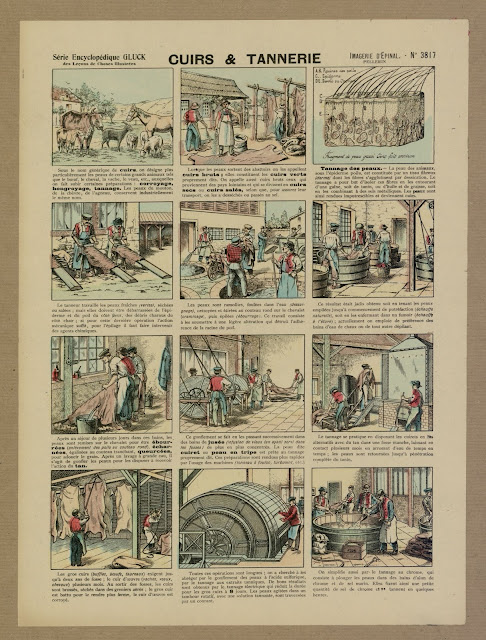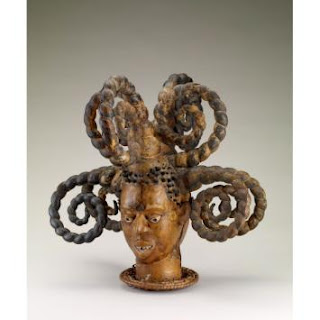Skin, leather and related materials in cultural heritage: history, technologies, conservation and restoration
26/03/2016
12/03/2016
“Skin-Covered Masks from the Cross River Region of Nigeria and Cameroon at the National Museum of African Art: A Technical Study” by Owczarek (2014)
Owczarek, Nina, “Skin-Covered Masks from the Cross River Region of Nigeria and Cameroon at the National Museum of African Art: A Technical Study”, Journal of the American Institute for Conservation 53(3) (2014) pp. 182–197.
DOI:10.1179/1945233014Y.0000000025 (Taylor & Francis Online, restricted access)
Abstract:
Nineteen skin-covered masks from the Cross River region of Nigeria and Cameroon were studied at the National Museum of African Art. The construction of the masks are documented and compared against existing field literature. Results of analyses of the wood, skin, and surface applications are included, as well as detail images of construction features. In addition to visual examination, x-radiography, thin section, deoxyribonucleic acid, portable x-ray fluorescence, x-ray diffraction, and Fourier transform infrared analysis techniques were employed in the examination. For the most part, this study showed the skin-covered masks in the NMAfA collection support the basics of the field literature descriptions while also illustrating a wider variety in techniques and materials.
11/03/2016
“Saving our skins: long-term care of masks from the Cross River Region” by Julien (2000)
Julien, Sophie, “Saving our skins: long-term care of masks from the Cross River Region”, Journal of Museum Ethnography 12 (2000) pp. 115–124.
URL (JSTOR, restricted access)
Abstract:
This paper gives a conservation perspective on collecting and conserving ethnographic material in the museum context, using the example of the Horniman Museum's collection of skin-covered masks from the Cross River Area of Nigeria.
URL (JSTOR, restricted access)
Abstract:
This paper gives a conservation perspective on collecting and conserving ethnographic material in the museum context, using the example of the Horniman Museum's collection of skin-covered masks from the Cross River Area of Nigeria.
04/03/2016
“Nanomaterials for the cleaning and pH adjustment of vegetable-tanned leather” by Baglioni et al (2016)
Baglioni, Michele; Bartoletti, Angelica; Bozec, Laurent; Chelazzi, David; Giorgi, Rodorico; Odlyha, Marianne; et al., “Nanomaterials for the cleaning and pH adjustment of vegetable-tanned leather”, Applied Physics A 122(2) (2016) pp. 1–11.
Leather artifacts in historical collections and archives are often contaminated by physical changes such as soiling, which alter their appearance and readability, and by chemical changes which occur on aging and give rise to excessive proportion of acids that promote hydrolysis of collagen, eventually leading to gelatinization and loss of mechanical properties. However, both cleaning and pH adjustment of vegetable-tanned leather pose a great challenge for conservators, owing to the sensitivity of these materials to the action of solvents, especially water-based formulations and alkaline chemicals. In this study, the cleaning of historical leather samples was optimized by confining an oil-in-water nanostructured fluid in a highly retentive chemical hydrogel, which allows the controlled release of the cleaning fluid on sensitive surfaces. The chemical gel exhibits optimal viscoelasticity, which facilitates its removal after the application without leaving residues on the object. Nanoparticles of calcium hydroxide and lactate, dispersed in 2-propanol, were used to adjust the pH up to the natural value of leather, preventing too high alkalinity which causes swelling of fibers and denaturation of the collagen. The treated samples were characterized using scanning electron microscopy, controlled environment dynamic mechanical analysis, and infrared spectroscopy. The analytical assessment validated the use of tools derived from colloid and materials science for the preservation of collagen-based artifacts.
Subscribe to:
Posts (Atom)

